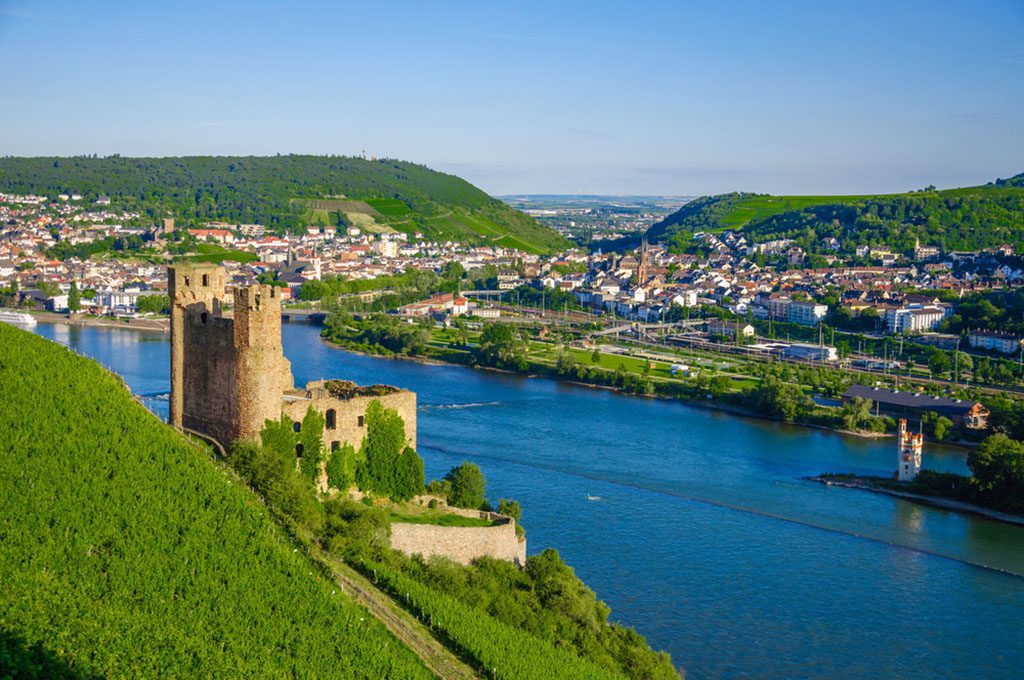Contrasts abound in the western portion of Germany, which is known for both its robust industrial sector and its picturesque river cruises through picturesque wine regions dotted with historic castles. Yes, a trip to western Germany is well worth it. Many of the cities can trace their origins back to the Romans, and you may even see some of the remains they left behind.
Despite widespread devastation in some cities during the war, several notable sites were spared. It’s recommended to spend at least a few nights in the region’s major cities to get a sense of the atmosphere and culture. In addition, be sure to stop and enjoy the scenery along the way. It’s a decision you won’t come to regret.
10. Dusseldorf
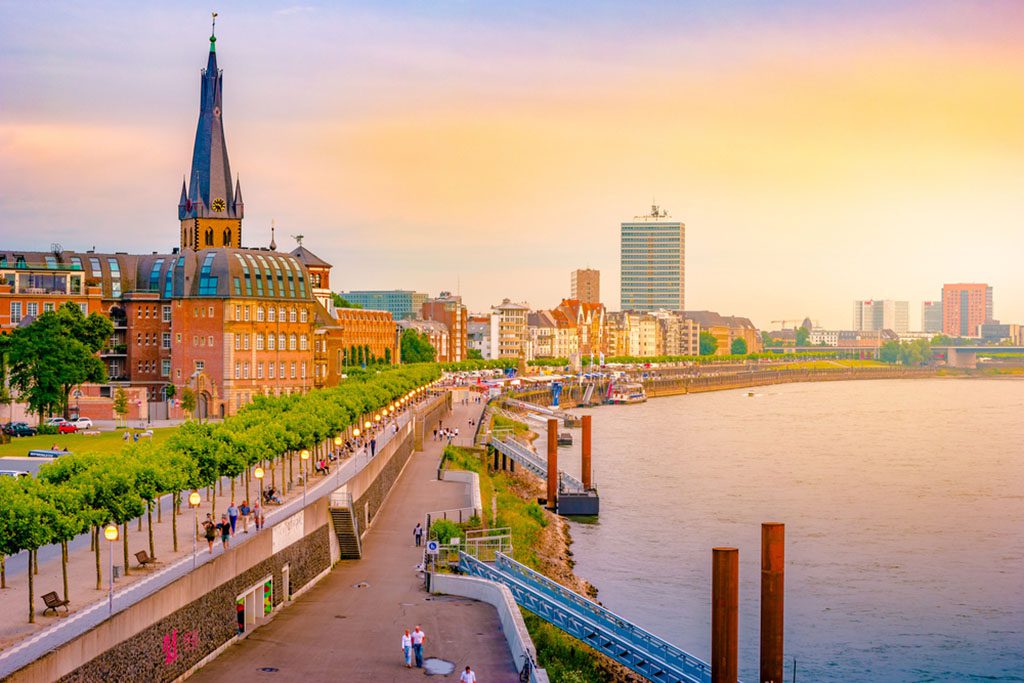
the Dusseldorf skyline as seen from the Rhine river. Image source: Romas_Photo/Shutterstock.com
Throughout the year, Düsseldorf plays home to a number of trade fairs, cementing its reputation as a major hub for international industry. It’s also a leader in the fields of technology and fashion. Düsseldorf has one of Germany’s largest Christmas markets, making it a great destination for the holiday season.
Don’t miss the Rhenish Festival during New Year’s if you’re more interested in revelry than shopping. Düsseldorf’s museums showcase everything from fine art to pottery to movies, making it a cultural hub as well. The Rheinturm, a telecommunications tower with an observation deck, offers spectacular views of the city.
9. Aachen
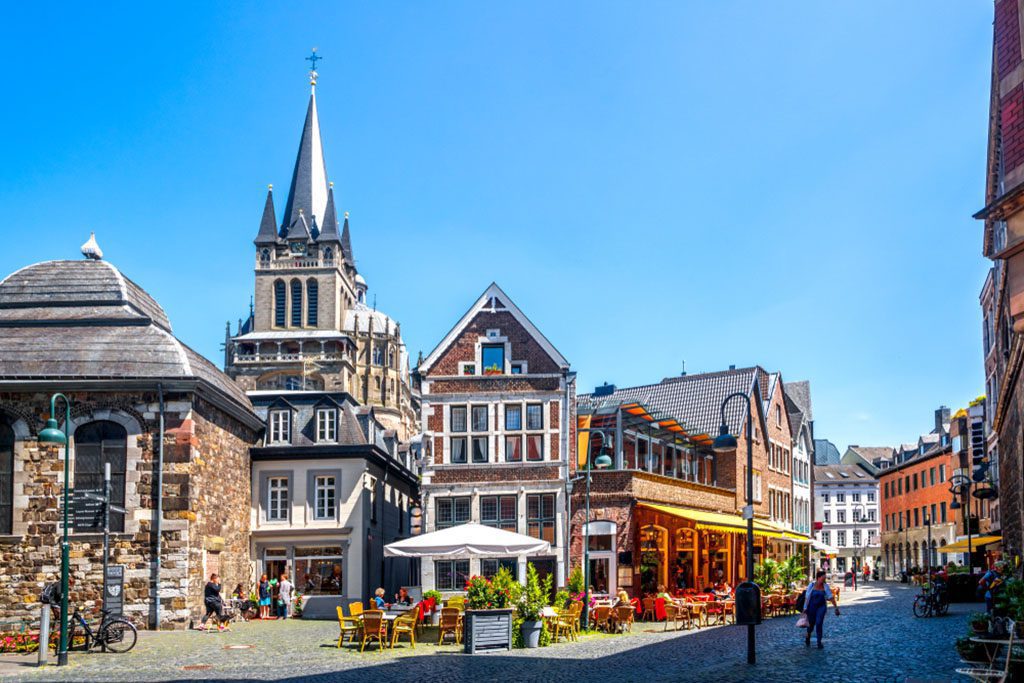
the majestic beauty of Aachen Cathedral in Germany. Image source: Sina Ettmer Photography/Shutterstock.com
During the reign of Charlemagne, founder of the Holy Roman Empire, the city of Aachen was used as his imperial residence. King Charlemagne is resting at the Aachen Cathedral, which he commissioned in 796. In the massive church, 30 German monarchs and 12 German queens were crowned.
Charlemagne laid the foundation for the cathedral’s treasury, which is now filled with crowns, art, and holy artifacts presented by numerous European monarchs. The city hall of Aachen, which dates back to the 13th century and has murals depicting events from Charlemagne’s life, is another must-see for visitors to this region of Germany along the borders with Belgium and the Netherlands.
8. Koblenz
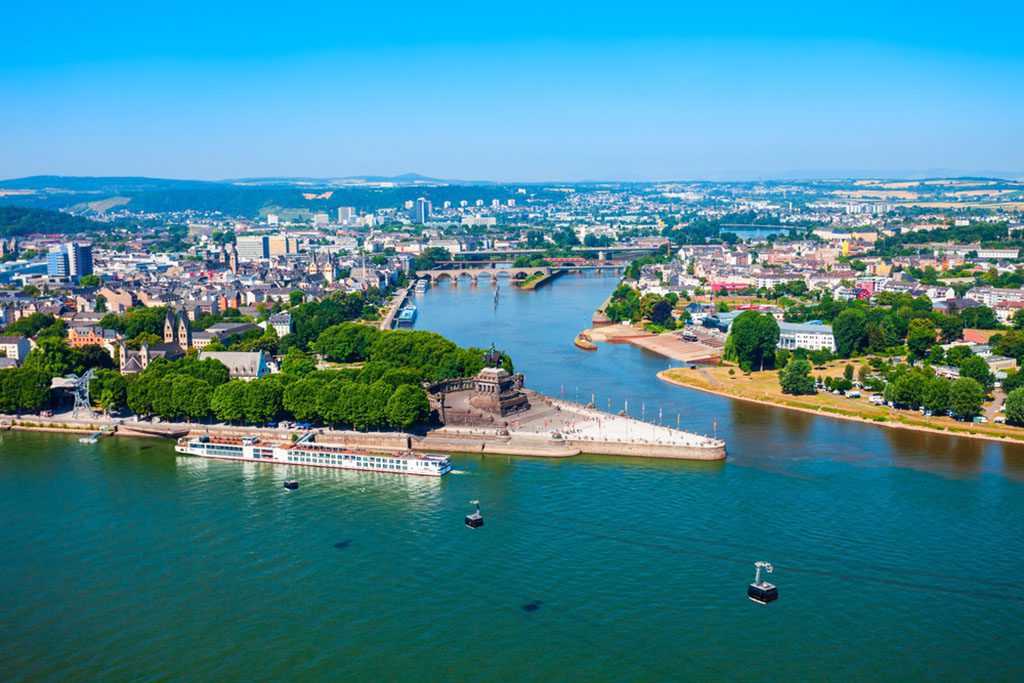
the scenic beauty of Deutsches Eck, a headland located in Koblenz, Germany. Image source: saiko3p/Shutterstock.com
Koblenz, formerly a Roman fortress, is now one of the most attractive cities in all of West Germany. The Ehrenbreitstein Fortress on the Rhine’s high ground is a great vantage point from which to take it all in. It’s hard to imagine a more picturesque setting than this city at the meeting of the Rhine and Moselle rivers, with the Alps as a backdrop. Koblenz’s strategic location makes it an ideal departure point for river cruises across the region.
There is much to do on land if you don’t want to go on a cruise. Goethe was inspired to compose a poem about the 13th-century Lahneck Castle, which is on the list together with the Deutsches Eck monument at the confluence.
7. Trier
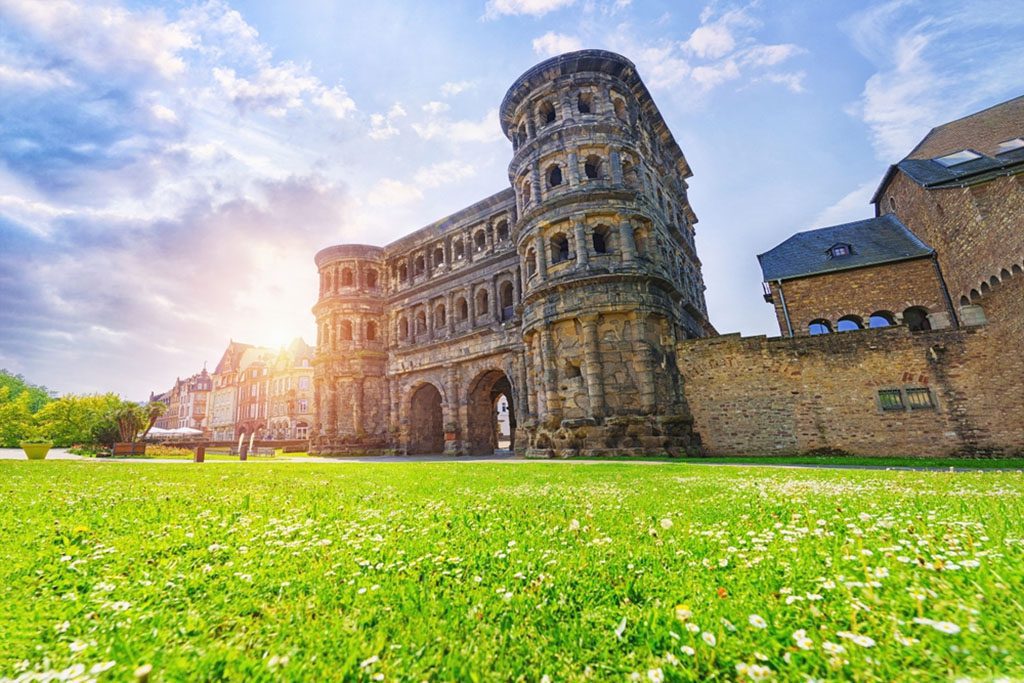
the amazing view of the famous Porta Nigra gate in Trier, Germany. Image source: Igor Link/Shutterstock.com
Trier is said to be the oldest city in Germany, having been founded by the Celts in the fourth century BC. Trier, often spelled Treves, is a city in the heart of wine country on the banks of the Moselle River. The best wine in the area is the Riesling, so don’t skip it.
Besides its vineyards, Trier also boasts a number of important historical sites, including the Porta Nigra Gate, a Roman arch that dates back to the 2nd century and is now a Protestant church, and the grand Constantine Basilica, originally constructed for the Emperor Constantine I in the 4th century but now used as a church. A robe said to have been worn by Jesus before his death may be seen at Trier Cathedral. Also, there’s a museum honoring Karl Marx, a local son.
6. Mainz
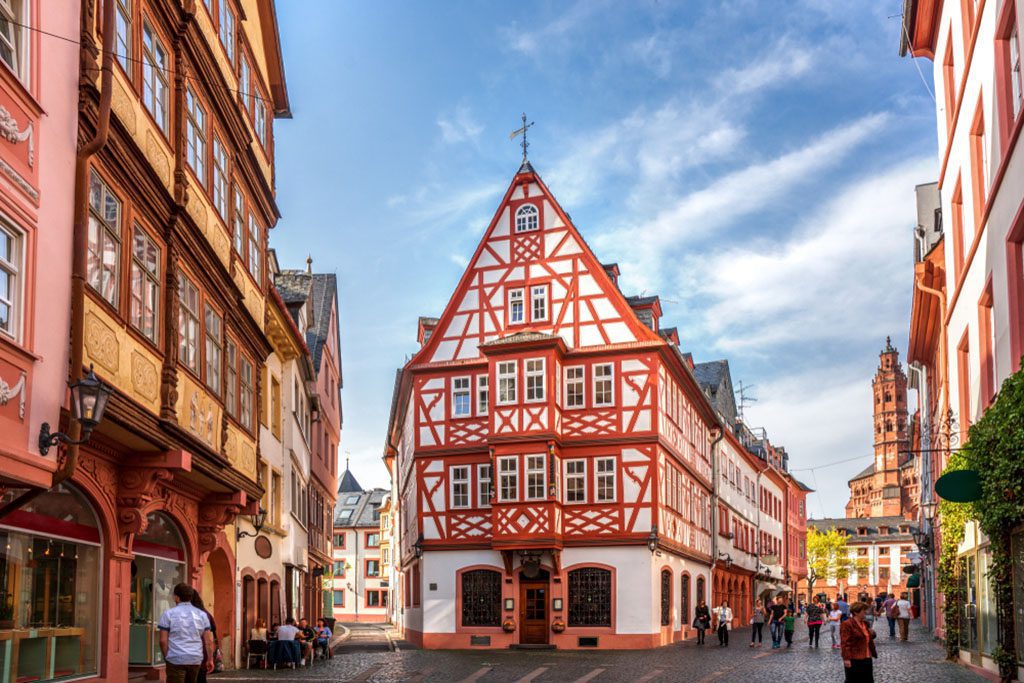
the historic charm of Mainz, Germany. Image source: Sina Ettmer Photography/Shutterstock.com
Mainz, to the west of Frankfurt, has a rich and illustrious past. In the first century BC, the Romans established it as a settlement. About 1,500 years later, Guttenberg developed the moveable type printing machine there, paving the way for modern books.
You won’t discover an Old Town since World War II destroyed almost 80% of the city core. Contrarily, you’ll see a futuristic metropolis home to museums brimming with historical relics. Mainz, located on the Rhine River, is home to Marc Chagall-designed stained glass windows in the Church of St. Stephen and a thousand-year-old cathedral dedicated to St. Martin.
5. Frankfurt
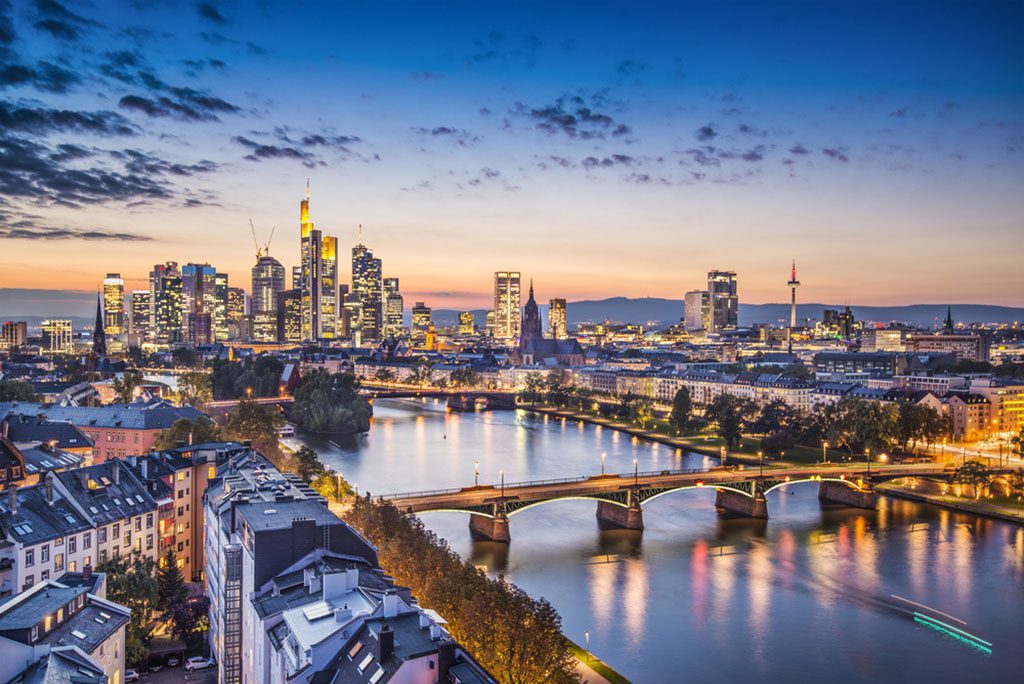
the impressive skyline of Frankfurt, Germany’s financial capital. Image source: Sean Pavone/Shutterstock.com
Once upon a time, Frankfurt was a major hub of the Holy Roman Empire. The German Stock Exchange and the European Central Bank may both be found in Frankfurt, Germany’s fifth biggest city and the country’s unofficial financial capital. The Roner, also known as the municipal hall, is made up of a cluster of nine colorfully painted cottages with pointed gables. The Gothic Frankfurt Cathedral, whose tower reaches towards the clouds, might be your next destination.
The first coronations of Holy Roman Emperors took place in 1356. Another alternative is the Archaeological Garden, which has a royal palace in addition to a Roman village and other historical structures. The lone surviving half-timbered home in Allstadt is only one of many historic structures in the area.
4. Munster
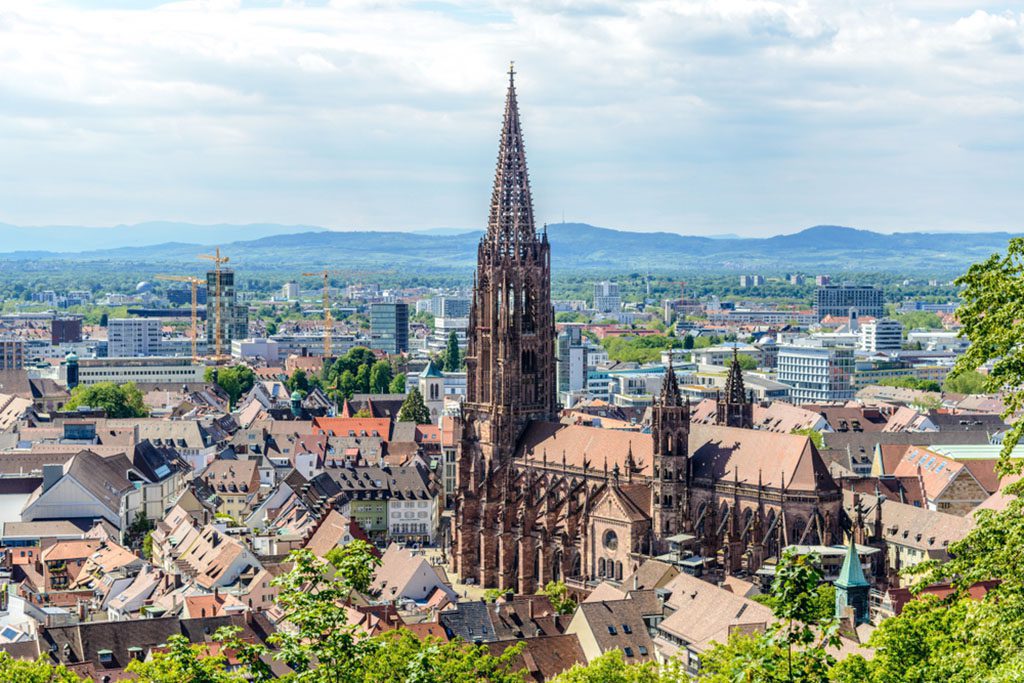
the impressive Freiburger Münster Cathedral in Freiburg, Germany. Image source: Mikalai Nick Zastsenski/Shutterstock.com
Biking around Munster, in Western Germany, is a great way to work off those extra calories you’ve consumed from the region’s famed gastronomic offerings. Several years ago, researchers discovered that bicycling was more popular than automobile ownership among locals.
The town’s many sights are conveniently located within easy biking distance of each other, making this Westphalian city a great destination for cyclists. The rebuilt St. Paul’s Cathedral from the 13th century, which has a 1540 astronomical clock with a hand-painted zodiac; Prinzipalmarkt, a medieval commercial area; and St. Lambert’s Church, from the 14th century, which features three cages that showed the bodies of rebels in 1535. The botanical garden, which opened in 1803, is a beautiful place to visit, and horse lovers should not miss the Westphalian Horse Museum.
3. Marburg
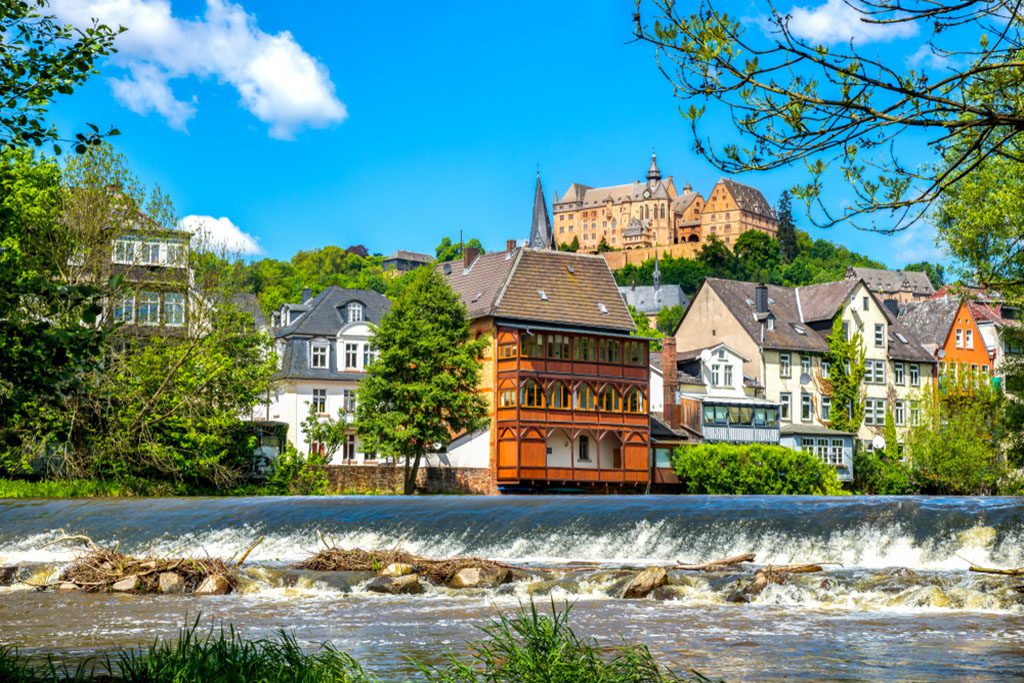
the charming old city of Marburg an der Lahn, Germany. Image source: Sina Ettmer Photography/Shutterstock.com
Due to its location on two medieval trade routes—from the North Sea to Italy and Cologne to Prague—Marburg grew along the Lahn River. The Reformation in 1527 saw the establishment of this university, making it the world’s first Protestant institution of higher education.
From a neighboring hill, the Marburg Schloss, or castle, looks down on the city. St. Elizabeth’s Church is also well-known since it was named after a Hungarian princess who became involved in healthcare and built it to better serve those in need. At the age of 24, she passed away in 1231 and is now revered as a saint. The municipal hall and botanical park are also highly recommended.
2. Cologne
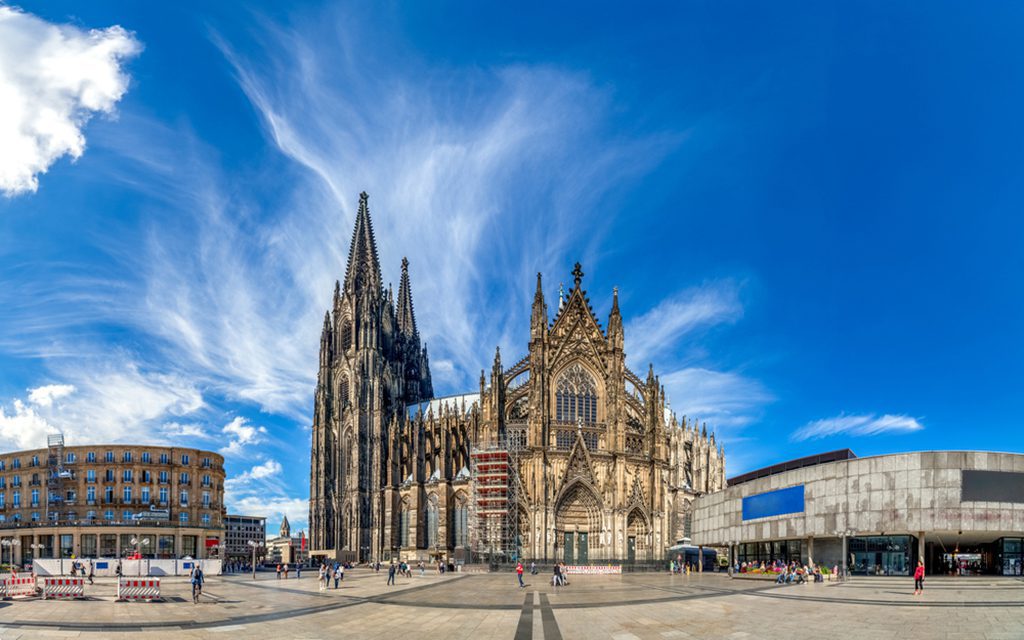
the impressive Cologne Cathedral, one of the largest and most famous cathedrals in Germany. Image source: Sina Ettmer Photography/Shutterstock.com
Cologne is responsible for your appreciation of cologne. In 1709, it was created in this same location. This Rhine-Ruhr metropolis is perhaps most known for its cologne, but it is also home to many other notable German institutions. Located in western Germany, close to the borders with the Netherlands and Belgium, Cologne is the most popular tourist destination in all of Germany because of its stunning Gothic cathedral, which draws an average of 200,000 tourists daily.
Additionally, its university is well-known as one of the most prestigious in all of Europe. The city hall dates back to the 12th century and is the oldest building in all of Germany that is still in use today.
1. Romantic Rhine
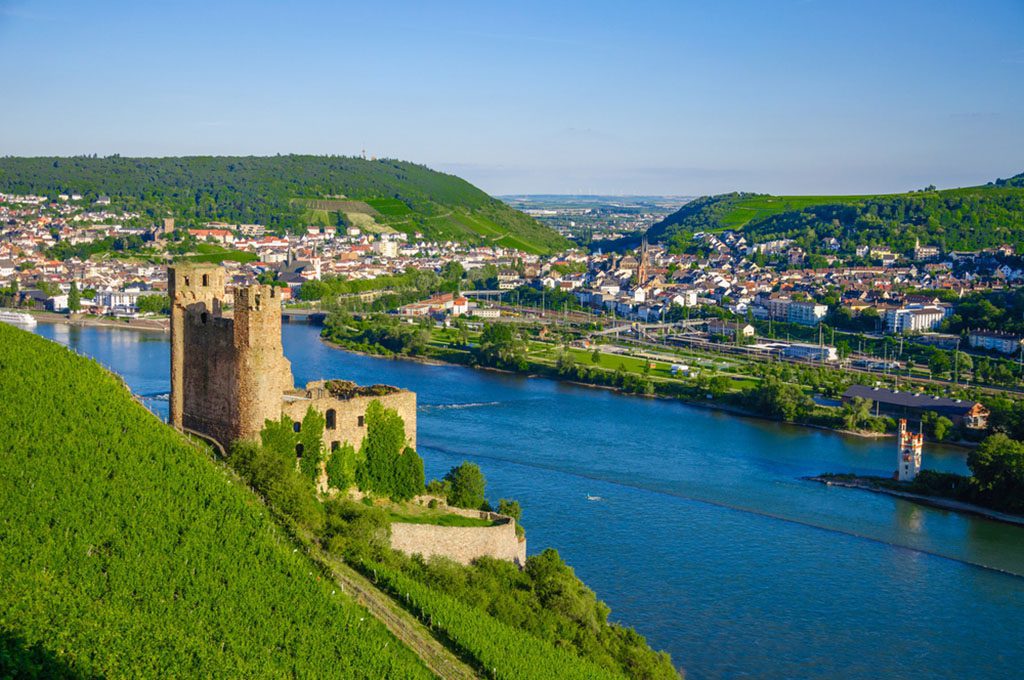
the historic Ehrenfels Castle on the banks of the Rhine River in Germany. Image source: Dmitry Eagle Orlov/Shutterstock.com
A trip along the Rhine River is the ultimate in romance. Perhaps by just strolling there? Specifically, the stretch of river between Koblenz and Rüdesheim is referred to as the Romantic Rhine. You may feel like you’ve stepped into a fairy tale as you admire the medieval castles perched above verdant slopes surrounded by vineyards.
However, the knights and princes who extracted tolls from river users to pay for all this grandeur in what is widely regarded as one of Germany’s finest landscapes, not romance, are responsible for creating this enchanted place. All of these castles are noteworthy: Ehrenbreitstein Fortress, perched high above Koblenz; Marksburg Castle, perched above the canyon; and Maus Castle, built in the 13th century, are noteworthy castles.


